Vocabulary Instruction: When Definitions Don’t Work
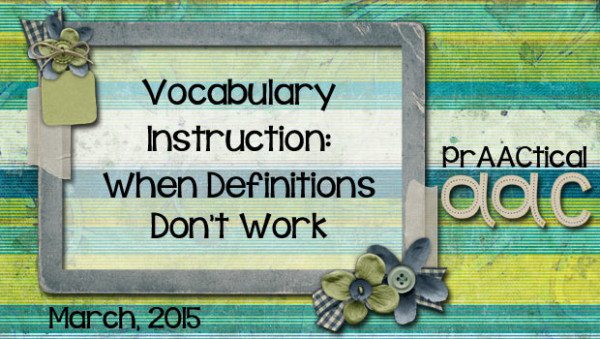
Vocabulary instruction and definitions generally go hand-in-hand. We’re used to creating learner-friendly definitions for the new words we teach, then using those definitions to introduce the word with focused language stimulation. In some situations, though, working with definitions is not the way to go.
Here are some examples.
- Limited receptive skills: When we’re working with learners whose receptive vocabularies are very small, it can be impossible to define a new vocabulary term using only words that the learner already understands. Simone is a beginning communicator who is just starting to get the hang of symbolic communication. On a good day, she can pick out symbols for things that she wants to do (like play and eat) without any help at all, but following single step directions, identifying symbols, and matching them is more of a challenge. Giving her a definition for our new words, (open and big), isn’t likely to be helpful.
- Function words: Many core words are function words. Function words serve to help us use correct grammar in our sentences. They differ from content words, which add a lot of meaning to the sentence. Coming up with definitions for function words (which are not content-heavy) is practically impossible. To get a sense of this, try defining words like ‘that,’ ‘on,’ and ‘it.’
When using word definitions doesn’t make sense, then we have to rely more heavily on other strategies to make our instruction successful. Aided language input, focused language stimulation, frequent productions of the words, scaffolding with recasts, and other things become even more important. We focus more on doing activities around that word (language experience activities, collage building, word sorts, etc.) to make the meaning come alive.
We may also need to do a little work on operational competence with some of these words. Consider that many of our clients are not just learning the words but also a) how these words are symbolized, b) where the words are in the AAC device, and c) how to access those words. In those situations, it can help to do a little warm-up before plunging into our activity or lesson.
Choral responding (call and response) works well for some learners. In this approach, we practice the words OUT OF context first, then move onto an activity where we use and elicit them IN context.
“Let’s get ready to read! First, let’s say our special words for the week. We’re going to use them when we read. ‘GET.’” [Pause and elicit GET from the learners.] “HE” [Pause and elicit HE] etc.
I’ve found that taking a few minutes to do this alerts the learners to the words we’ll be focusing on in the activity and gives them practice with the motor pattern used to say them. It’s kind of like dancers who spend some time limbering up before they perform or runners who stretch before starting their run.
Have you tried other strategies for teaching new words when student-friendly definitions don’t seem to be the way to go? Please share so we can all learn together.
Filed under: PrAACtical Thinking
Tagged With: intervention, semantic instruction, vocabulary
This post was written by Carole Zangari

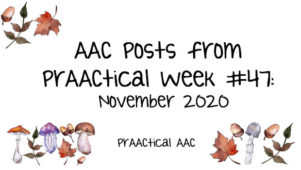
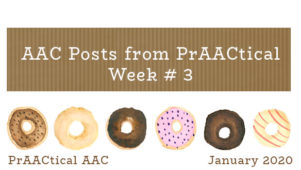
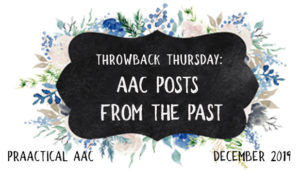
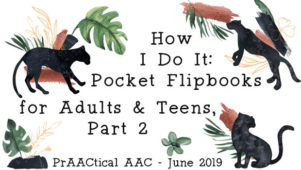
3 Comments
I love working on core/function words. They are powerful beasts. I find I rely on the work of Bruce Bracken for concept building understanding that for most of us we learn through our own experience/self, then through objects, then through two dimensional like paper/pictorial representations. I pair the auditory and visual of the word from the beginning, however so it is not new while we address motor planning.
This information is very interesting, if is possible I want more instruction about vocabulary strategies.
Thanks, Saida! Here are some other posts that might be helpful: http://bit.ly/1HTprI4